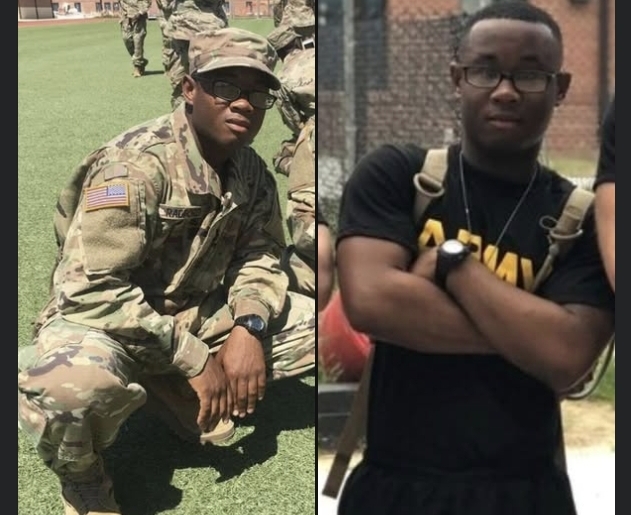On a seemingly ordinary morning, August 6, 2025, the tranquil rhythm of Fort Stewart, one of the U.S. Army’s largest bases, was shattered by gunfire. The sprawling military installation, nestled 40 miles southwest of Savannah, Georgia, became the stage for a harrowing incident that left five soldiers wounded and a community in shock. The alleged perpetrator, 28-year-old Army Sergeant Quornelius Samentrio Radford, now sits in custody, his actions sparking a firestorm of questions about motive, security, and the safety of those who serve.
The chaos erupted just before 11 a.m. in the 2nd Armored Brigade Combat Team (2ABCT) area, a bustling hub of activity on the base. Radford, an automated logistics sergeant stationed at Fort Stewart since 2022, opened fire on his coworkers with a personal 9mm handgun he had purchased in Florida earlier that year. The weapon, not military-issued, was a chilling detail that raised immediate concerns about how it made its way onto the highly secure installation. In a matter of moments, five soldiers were struck, their lives hanging in the balance as the base descended into lockdown.
Heroism emerged amidst the terror. Fellow soldiers, witnessing the attack, acted with breathtaking courage. Without hesitation, they tackled Radford, subduing him before he could inflict further harm. By 11:35 a.m., less than 40 minutes after the first shots rang out, law enforcement had him in custody. Their swift response undoubtedly saved lives, earning praise from Brigadier General John Lubas, commander of the 3rd Infantry Division and Fort Stewart-Hunter Army Airfield. “These soldiers, without a doubt, prevented further casualties,” Lubas declared during a press conference that afternoon.
The victims, all coworkers of Radford, were rushed to Winn Army Community Hospital for immediate treatment. Three required surgical intervention, while two were transferred to Memorial Health University Medical Center in Savannah, a Level 1 trauma center, for advanced care. Miraculously, all five soldiers were reported in stable condition by the afternoon, with expectations of full recovery. Their families, notified promptly, joined a nation in holding their breath, praying for healing.
Radford, a Jacksonville, Florida native who enlisted in January 2018, had no combat deployments and, until recently, no known disciplinary issues within the Army. However, a shadow lingered over his record: a May 2025 arrest for driving under the influence in Liberty County, Georgia, where he was also cited for running a red light. Shockingly, this incident was unknown to his chain of command until after the shooting, exposing potential gaps in oversight. Radford was due in court on August 20 for the DUI charge, a detail now under scrutiny as investigators probe his background.
The motive behind Radford’s rampage remains elusive. A law enforcement source revealed a possible clue: a disagreement with one of the victims the day before the shooting. Radford allegedly followed this soldier to a maintenance area, shooting them in the chest before turning his weapon on four others. Numerous shell casings littered the scene, a stark testament to the violence. Yet, Brig. Gen. Lubas emphasized that the Army is still piecing together the “why” behind the attack. “We’re still not certain about the motivations,” he said, noting that Radford had been interviewed by the Army Criminal Investigation Division, with charges pending from the Office of the Special Trial Counsel.
Fort Stewart, home to nearly 15,000 active-duty personnel and thousands of family members, is no stranger to tragedy. In 2022, Sergeant Nathan Hillman was killed on base by another soldier, and in 2023, a domestic incident claimed the lives of Staff Sergeant Meiziaha T. Cooper and her family. This latest shooting, while non-fatal, has reignited concerns about insider threats and security protocols on military installations. How did Radford bring a personal handgun onto the base? Why was his DUI arrest not flagged by his superiors? These questions now loom large as the Army and FBI investigate.
The incident sent ripples far beyond Georgia. President Donald Trump, briefed on the situation, called it an “atrocity” during a White House event, vowing that Radford would be prosecuted “to the fullest extent of the law.” White House Press Secretary Karoline Leavitt echoed this sentiment, stating the administration was closely monitoring developments. Georgia Governor Brian Kemp and local leaders, including Hinesville Mayor Karl Riles, expressed solidarity with the victims, emphasizing Fort Stewart’s deep ties to the community. “Fort Stewart is more than a military installation; it is a vital part of Hinesville,” Riles wrote on social media. “The men and women who serve there are our neighbors, friends, and family.”
As the dust settles, Fort Stewart has lifted its lockdown, and the gates are open once more. The wounded soldiers are on the mend, their resilience a beacon of hope. Yet, the scars of this day will linger, prompting soul-searching within the military and beyond. Quornelius Radford, now in pretrial confinement awaiting a court-martial, remains at the center of a mystery that has shaken one of America’s proudest bases. What drove a sergeant to turn on his own? The nation waits for answers, united in gratitude for the bravery that stopped a tragedy from becoming even worse.



